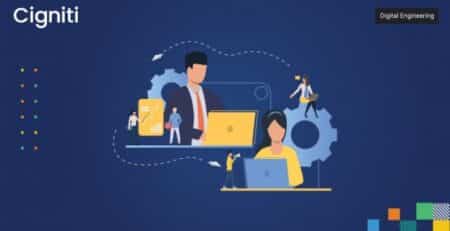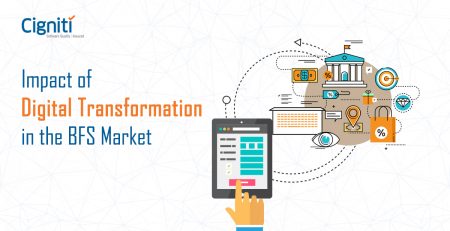Drive digital transformation with hyperautomation
By harnessing the power of multiple technologies such as Robotic Process Automation (RPA), Artificial Intelligence (AI), Machine Learning (ML), low-code application platforms (LCAP), Natural Language Processing (NLP), and virtual assistants, hyperautomation has extended the confines of legacy business process automation.
It is poignant beyond automating just the functional and strategic requirements of an enterprise and concentrating on more cohesive and tactical needs of the enterprise.
Hyperautomation was one of the top 10 strategic technology trends and it inevitably determines business processes and generates bots to automate them.
According to a new forecast from Gartner, Inc, “The worldwide market for technology that enables hyperautomation will reach $596.6 billion in 2022, this is up from $481.6 billion in 2020 and a projected $532.4 billion this year.”
Hyperautomation works in harmony with all these emergent technologies to automate complex business processes, including where subject matter experts were once required.
While RPA has proved to be the most viable means for automating mundane tasks, it proved futile working on unstructured data which encompass more than 75% of the enterprise data.
This is when the urge to move beyond RPA transpired.
Moving beyond RPA
Efficacious digital transformation requires enduring tactical thinking. Comprehending the complete advantages of digitalization efforts necessitates more than simply transforming manual processes into digital methods.
By depending merely on RPA, enterprise architects and technology innovation leaders are averting full, end-to-end process automation.
To thrive with digitalization efforts, it is recommended to plan a lasting calculated roadmap by positioning business goals, recognizing methods to enhance and picking complementary technologies.
However, IT leaders often focus on immediate solutions of monotonous process automation with RPA but selecting the correct technology that brings enterprise-wide automation is challenging.
While RPA may deliver swift respite as a noninvasive form of integration, the processes are not constantly simple, monotonous, tedious, and steady.
The processes may be enduring and often include intelligent automated decision-making and optimization.
One tool or siloed tactics cannot unravel the actual challenge to scale beyond the mundane processes.
Per Gartner, “Hyperautomation refers to an effective combination of complementary sets of tools that can integrate functional and process silos to automate and augment business processes.”
While it is certain that hyperautomation is a key enabler towards digital initiatives, what does it take to implement it effectively?
Key strategies for enabling hyperautomation towards digital transformation
Some of the key strategies to enable hyperautomation starts with planning your process automation journey followed by applying Digital Ops toolbox and augmenting with AI.
The Digital Ops technology toolbox comprises document ingestion, process mining, decision modelling, analytics, ML, User Experience/Customer Experience (UX/CX), intelligent Business Process Management Suite (iBPMS), and Integration Platform as a Service (iPaaS).
To plan the automation journey, it is imperative to lay a roadmap for hyperautomation that includes defining the desired outcome by optimizing the process and assembling Digital Ops tools with others.
A goal for the digital transformation journey must be set by business leaders and should be aligned to 3 key objectives – Long-term value, Operational Cost Reductions, and Risks.
Enhancing the business processes may be engrossed in rightsizing and improving the procedure of decision intelligence with standardized and structured data inputs.
Recognize the Digital Ops tools that are meticulously associated with your automation roadmap. Evaluate diverse technology markets and generate a liberal asset strategy to efficiently deliver strategic and calculated business principles.
While concurrent hyperautomation initiatives are a key enabler to drive digital transformation, it is imperative to look at some of the common challenges in the post pandemic era that transpire to ensure a smooth implementation and meet customer expectations.
Challenges of hyperautomation in the current scenario
Intelligent automation challenges ascend in the need to swap repetitive processes and provision business revenue.
Some of the common challenges enterprises face while embarking on the hyperautomation journey include –
- Making your employees feel appreciated
- Selecting the correct solution from the ever-growing and evolving marketplace of products
- Creating in-house expertise
- Developing and following a faithful project timeline
- Ensuring that the project is equipped with solid headship
- Understanding the means to measure the success
- Scheming palpable and imperceptible Return on Investment (ROI) up front with higher accuracy
- Gaining shareholder and administration backing for an innovative and unacquainted approach
While these are few of the common challenges that take place during implementation, we can overcome these by following certain actions.
Overcoming the hyperautomation challenges
The subsequent activities can help ensure a successful implementation of your hyperautomation project:
- Deliver the chance to train in sandbox environments
- Accomplish the change effectively
- Recognize all the showstoppers
- Trust on inside expertise
- Regulate what methods need to be addressed early and which procedures can take a pause
Hyperautomation comes with a reap of benefits enabling enterprises to drive their digital transformation initiatives.
Benefits of hyperautomation
According to Fabrizio Biscotti, research vice president at Gartner, “Hyperautomation has shifted from an option to a condition of survival. Organizations will require more IT and business process automation as they are forced to accelerate digital transformation plans in a post-COVID-19, digital-first world.”
Intelligent Process Automation initiatives primarily target reduction in cost and upsurge in acquiescence.
Adding to it, some of the other benefits of hyperautomation technologies for business model enhancements include:
- Enterprises don’t need to depend on a single technology to automate. They can achieve scale and flexibility by using a suite of tools and cultural change.
- Automation makes it possible for employees to focus on more value-added tasks.
- It is possible to integrate digital technologies across processes and legacy systems.
In a nutshell, hyperautomation tools are still at a nascent stage and will take some time to realize complete benefits.
Nevertheless, it is proving to be a driving force for all the digital transformation initiatives and enterprises who could adapt to it at the initial stages are projected to have a competitive advantage over others.
Final Thoughts
Automation is now a common term for business and almost every enterprise has inculcated its processes according to it.
Assuring something more than automation, hyperautomation is now enticing much consideration owing to its vast advantages and business benefits that it brings to the table.
Cigniti Technologies is a global leader in Independent Software Quality Assurance and Quality Engineering Services that accelerates digital transformation journeys of enterprises and governments and provides robust performance and security testing services by leveraging Hyperautomation technologies such as RPA, AI, and Intelligent Automation.
Cigniti’s hyperautomation experts collaborate with your team to identify the best automation candidates based on the process characteristics & define the governance framework for the engagement.
Our hyperautomation services include providing end-to-end automation of business processes and help reduce the cost of quality. Our experts help define hyperautomation metrics, measures, benchmarks, and baselines and suggest any changes required, and define & develop a comprehensive hyperautomation framework.
Key highlights of our RPA automation framework:
- Customized utilities to eliminate RPA tool limitations.
- Feature to integrate with APIs and other data sources for effective automation coverage.
- Efficient scheduling mechanism to ensure optimized BOT utilization.
- Control Room Sync – Synchronizes RPA code between Production & Test Environments and decreases time required for Production Deployment.
- Integrates with Cigniti Verita Dashboard – Predictive and prescriptive recommendations on critical measures of BOTs.
- Customized configurations for reporting and e-mail notifications.
Cigniti’s value add include –
- Experts in establishing an outcome driven RPA strategy assuring an early ROI.
- 20+ custom utilities to strengthen BOTS operational accuracy.
- 15+ metrics and measures that are BOTS specific to improve BOTS operational efficiency.
- Cigniti’s Verita – AI & ML powered predictive dashboard, enables validating BOTS output.
- Re-usable accelerators (technical and domain) to fast-track RPA implementation.
Cigniti is powered by the strong strategic partnerships with “Top 3” OEMs aiding in building bespoke RPA solutions that helps reduce initial investment on RPA tools.
Talk to our hyperautomation experts to know more on how to drive digital transformation with hyperautomation.





Leave a Reply